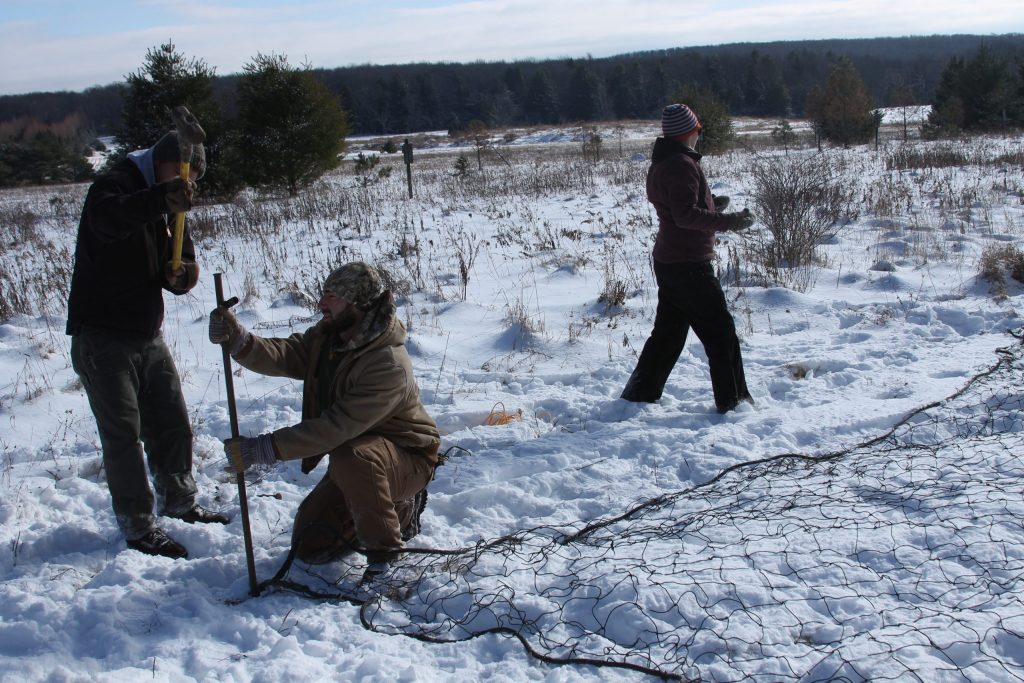If you are a die-hard reader of this blog (if there are any!) you have probably been wanting for new posts. Well, getting two field crews up and running to capture deer takes some time, but now that they are starting to get things operational we hope to share more information in the coming weeks.
For starters we want to show you how we capture deer. It’s cold, hard work but fun. I like to think of it as catch-and-release hunting.
In this post I am going to show you the set-up for what are called rocket nets. These are large 60′ x 40′ nets that are launched over deer to capture them. Below Matt and Richard are laying out the net so they know where the capture zone is located.

Here Katie is carefully gathering up the net to fold it into a pile. This has to be done together as a team.

Once the net is folded in a pile along the long (60′) axis the rockets are set in place on their launching posts. In the picture below the round cylinder contains an explosive charge – the cylinder has holes in the back so when the charge is ignited the rocket is propelled forward. A chain is attached to the rocket and the net is hooked to the chain via a carabiner. The wire you see going up the post is connected to a detonator, controlled by one of the field techs, that transmits an electrical current to ignite the explosive charge.

Here’s a picture of the complete set-up. 
We use shelled corn as bait. Over the years we have tried cracked corn, whole corn, molasses, apples, special mixtures guaranteed to attract deer – you name it – but plain shelled corn is easy to handle and works.
The corn is placed in a line in front of the net, but not immediately in front of a rocket. This setup was a test run to train the crews how to set up the net, secure and check the connections for the detonation wire, and then operate the detonator. It’s basically the same safety procedures (and equipment) a blasting crew uses.
So to show you how much fun this is, watch this testing of the net!
What is not so much fun is sitting in the cold for hours waiting for deer to arrive. Sometimes they come but won’t eat the corn. Other times they will all be in place but not put their heads down at the same time so the crew can fire the net. Or they will all suddenly run off! But if the net does go off and deer are caught it is all worth it.
In upcoming posts we’ll introduce you to the crew members, show you our other trapping method – Clover traps – and keep you posted on our progress. Our crew on the Susquehannock study areas has already caught 17 deer since Monday, January 19th!
-Duane Diefenbach
Acknowledgment: all photos and video provided by Kelsey Wellington
If you would like to receive email alerts of new blog posts, subscribe here.
And Follow us on Twitter @WTDresearch
